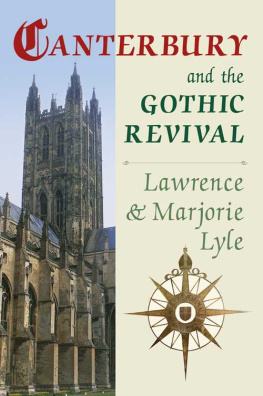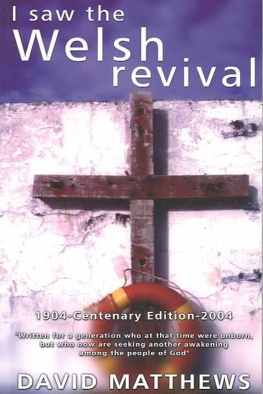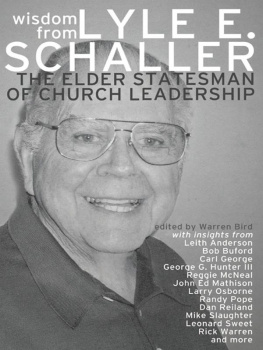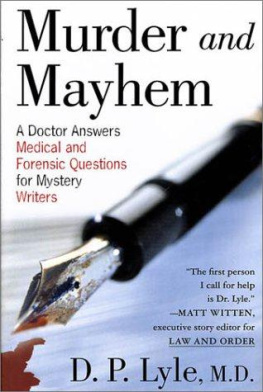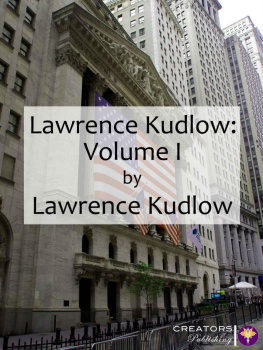Lawrence Lyle - Canterbury and the Gothic Revival
Here you can read online Lawrence Lyle - Canterbury and the Gothic Revival full text of the book (entire story) in english for free. Download pdf and epub, get meaning, cover and reviews about this ebook. year: 2012, publisher: The History Press, genre: Detective and thriller. Description of the work, (preface) as well as reviews are available. Best literature library LitArk.com created for fans of good reading and offers a wide selection of genres:
Romance novel
Science fiction
Adventure
Detective
Science
History
Home and family
Prose
Art
Politics
Computer
Non-fiction
Religion
Business
Children
Humor
Choose a favorite category and find really read worthwhile books. Enjoy immersion in the world of imagination, feel the emotions of the characters or learn something new for yourself, make an fascinating discovery.
- Book:Canterbury and the Gothic Revival
- Author:
- Publisher:The History Press
- Genre:
- Year:2012
- Rating:3 / 5
- Favourites:Add to favourites
- Your mark:
- 60
- 1
- 2
- 3
- 4
- 5
Canterbury and the Gothic Revival: summary, description and annotation
We offer to read an annotation, description, summary or preface (depends on what the author of the book "Canterbury and the Gothic Revival" wrote himself). If you haven't found the necessary information about the book — write in the comments, we will try to find it.
Canterbury and the Gothic Revival — read online for free the complete book (whole text) full work
Below is the text of the book, divided by pages. System saving the place of the last page read, allows you to conveniently read the book "Canterbury and the Gothic Revival" online for free, without having to search again every time where you left off. Put a bookmark, and you can go to the page where you finished reading at any time.
Font size:
Interval:
Bookmark:

For our great-grandchildren,
Leela and Oliver, to read one day
Many fellow citizens have contributed to our final tribute to the city and Cathedral. Our gratitude goes to: Cressida Williams and Dr Toby Hewitson at the Cathedral Archives; Philip Hadfield and his colleagues at Canterbury Museums and Galleries; the Kings School, Canterbury, and particularly Mary Berg and Peter Henderson, and their librarian at St Augustines, for their co-operation; Professor Jackie and Richard Eales, who commented on the historical accuracy of the first two chapters; Andrew Lyle and Pat Butler, who detected inaccuracies in the text; Paul Crampton and Jane Boucher, who provided access to additional information; and Heather Newton and Geoff Downer, for sharing their knowledge of the Cathedrals fabric.
Our particular admiration and thanks go to our granddaughter, Victoria Lyle, for her picture-research and negotiation worldwide, and to our local photographer, John Kemp. For the second time he devoted uncounted hours to recording and processing his stunning images. Finally, we are grateful to the Dean of Canterbury, Dr Robert Willis, who took the time to read and commend this book.
Our apologies to anyone inadvertently omitted. We acknowledge that any remaining imperfections are our responsibility.
Bell Harry Tower. The Cathedrals crowning glory was completed in 1504; because its picture is taken by most pilgrims, this image has been spread worldwide.
The Compass Rose. Symbolising the spread of the Anglican communion worldwide, this compass lies above the probable site of St Augustines first church, traced by archaeologists in 1993.
St Denis interior
The Cathedral Quire, north
The Cathedral Corona
The Cathedral nave
Christchurch Priory ruins
St Augustines Abbey ruins
Archbishop William Laud
William Somner
Cathedrall Newes from Canterbury (1644)
The Cathedrals old west front
Fonthill Abbey
Lee Priory, near Canterbury
The Scott Monument, Edinburgh
Thomas Rickmans frontispiece
Thomas Rowlandson cartoon: Dr Syntax
T.S. Cooper by John Prescott R.A., 1850
St Augustines Monastery (lithograph by T.S. Cooper)
The Cathedral and the railway by L.L. Raz
The throne in the House of Lords
The Grange and St Augustines Church, Ramsgate
Cambridge Camden Society seal
Revd Francis Closes sermon, 1844
The Canterbury Vauxhall
Library interior of St Augustines College
Chapel faade of St Augustines College
Students range of St Augustines College
Realigned monuments in St Augustines College, lower chapel
St Augustines College exterior by L.L. Raz
William Butterfield
Butterfields pulpit in the Cathedral
The Archbishops throne in the Cathedral
The font of St Marys, Ottery St Mary, Devon
All Saints, Margaret Street, London
The apse of St Margarets Church, Canterbury
The Martyrs Memorial, Oxford
The Cathedrals south-west porch
The Cathedrals porch, west side
Statue of Dean Alford on the Cathedrals west front
Tomb of Archbishop Broughton
Tomb of Dean Lyall
The Clergy Orphan School by L.L. Raz
Revd Samuel Marsden landing at the Bay of Islands, 1814
William Broughton and his bishops
St Patricks Cathedral, Melbourne
George Selwyn
Old St Pauls, Wellington
The Provincial Council Chamber, Christchurch
Benjamin Mountfort (1825-1898)
Christ Church Cathedral, Christchurch, New Zealand
John Medley
The Church of the Nativity, Huntsville, Alabama
1. Eastern Crypt of the Cathedral
2. The Cathedral nave
3. The Great Gallery of Strawberry Hill
4. Horace Walpole
5. A.W.N. Pugin
6. St Giles, Cheadle
7. A.J. Beresford Hope
8. Revd Edward Coleridge
9. The Great Court of St Augustines College
10. Spandrel at All Saints, Margaret Street, London
11. The pulpit at All Saints, Margaret Street, London
12. St Pauls Cathedral, Melbourne
13. Christ Church Cathedral, Fredericton, New Brunswick
14. Trinity Chapel, Canterbury Cathedral
When you hear Gothic Revival, what probably springs to mind is Strawberry Hill, the Houses of Parliament or St Pancras Station; so why a book about Canterburys place in this mainly nineteenth-century phenomenon? The answer lies in St Augustines mission of AD 597; a year later the Cathedral and Abbey were begun, and became the joint power houses of an expanding Church. The bold decision of the monks at the Cathedral five centuries later, in 1174, to rebuild their burnt choir in the new French Gothic style, would have revolutionary consequences. This first major example in England was copied across the country by pilgrims returning from the shrine of St Thomas Becket, where the high vaulting, tall pillars and large windows combined to produce a stunning Gothic space. This shrine, placed at the apex of a series of steps, created a separate raised space at the east end of the church. The appeal of such a layout was strong in the 1840s, as the High Church Cambridge Camden Society planned the restoration of parish churches in what they considered the natural English Gothic style. They wanted to reinstate a separate chancel, an area that had been demoted during the Reformation in the interests of preaching and congregational worship.
Through the troubled Reformation centuries, antiquarians from William Somner onwards would secure the survival of Canterburys Gothic image. For the Gothic Quire had in turn spurred later architects to produce fourteenth- and fifteenth-century Gothic examples of great beauty in the nave and Bell Harry Tower. In the early years of the Gothic Revival, the Cathedrals romantic and picturesque appearance made it a favourite subject for topographers, lithographers and artists. Academic studies of the evolution of Gothic cathedrals followed the popularisers.
The 1840s would prove to be a seminal decade in Canterbury, as elsewhere. Robert Williss groundbreaking Architectural History of Canterbury Cathedral was adumbrated at lectures here in 1844. This was to prove an important year. The ideas of Pugin, of the Tractarians, and of the High Church Ecclesiological Society had become the talk of the day. Under their influence, three key individuals came together in that year: A.J. Beresford Hope, Revd Edward Coleridge and William Butterfield. Their project was to rescue Englands first Abbey of St Augustine from its fate as a rundown brewery and pleasure garden. Their campaign from 1844 to 1848 to create an Anglican missionary college on the site would have important consequences.
The architect of the college buildings, William Butterfield, would see his career take off; and his influence on secular and ecclesiastical buildings at home and abroad would affect the later spread of the Gothic style. The early advocates and founders of the college, and its missionaries, would go on to do much to make Gothic whether in wood, stone or brick as natural a style in the British colonies as it had become in England itself.
Unlike Victorian industrial cities, whose expansion coincided with the Gothic Revival, Canterbury boasts no Gothic civic buildings, hotels or grand mansions; one isolated Gothic bank stands in the High Street. So the host of modern tourists come to visit the three-part Gothic Cathedral and its Precinct in a setting of narrow lanes lined with mainly late medieval buildings encircled by its ancient walls.
Next pageFont size:
Interval:
Bookmark:
Similar books «Canterbury and the Gothic Revival»
Look at similar books to Canterbury and the Gothic Revival. We have selected literature similar in name and meaning in the hope of providing readers with more options to find new, interesting, not yet read works.
Discussion, reviews of the book Canterbury and the Gothic Revival and just readers' own opinions. Leave your comments, write what you think about the work, its meaning or the main characters. Specify what exactly you liked and what you didn't like, and why you think so.

